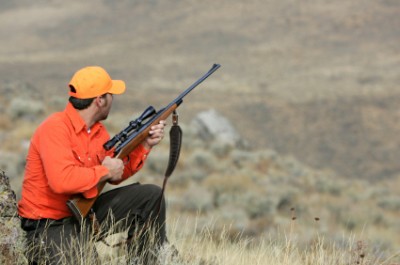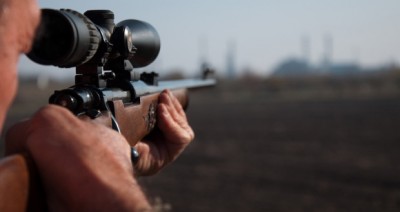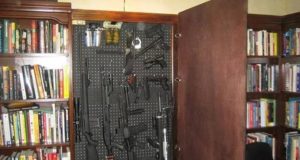A rifle should accommodate the unique needs of its shooter. And those needs will not only be based in their applications and philosophy-of-use, but also in the diverse environments in which they must come to serve the individual pulling the trigger.
In light of that fact, I am well aware that my fellow off-the-gridders live in cities, small towns, and tiny map dots from sea to shining sea. With that said, a rifle, which would be most effective in the Appalachian wilderness, would likely have major difficulties if it were pressed for similarly effective performance on the vast, open prairies of Kansas.
If anything, whether for hunting or for tactical/defensive purposes, the biggest rule-of-thumb on equipping yourself with a good rifle is to first identify your “mission” … because taking an elk is a very different proposition than taking, say, an armed intruder in your home.
Cover, Concealment, and Crazy-Long Ranges
It’s critical to identify what your rifle will, and most importantly, will NOT do — taking into account several of the following factors…
- Foliage density
- Most likely ranges
- Intended target(s)
- Humidity, moisture, elevation and climate factors
- Ergonomics and weight
In addition, it’s important to know your own specific local municipal and state laws when selecting your rifle. Certain areas prohibit the use of hunting rifle calibers; whereas, others have established limits on round capacities and semi-autos (I’m looking at you, Pennsylvania).
So, if your land covers long ranges over a flat area, but it’s got dense patches of undergrowth (as you might find in southwestern Ohio), then you’ll want a rather heavy, 200-yard optimal caliber chambering that won’t keyhole off a blade of grass in its path to the target. On the other hand, taking mountain goats in Wyoming will require a very different rifle. Such assessments, however, should be decided after gaining a solid understanding of the terrain and ultimately identifying the rifle’s primary mission.
When This Actually Matters …
From region to region, there will be considerable “wiggle room” when it comes to a shooter’s needs — especially since the ecological/geological makeup of the land will have its own unique characteristics. However, in a general example, here’s what I’m talking about…
 Northeastern and Western Woodlands – For this type of environment, you’re going to run into a thickly wooded area. Not only will your line-of-sight to the target be blocked by trees, but the undergrowth would be dense enough to completely decimate chances of getting a clear shot at long ranges. For this reason, I’d recommend shorter range and harder-hitting options that won’t need to go much past 50 yards. A bolt action or semi-auto .223 could be great for taking varmints off a wheat field, but in the deep woods, a shotgun tends to do the trick.
Northeastern and Western Woodlands – For this type of environment, you’re going to run into a thickly wooded area. Not only will your line-of-sight to the target be blocked by trees, but the undergrowth would be dense enough to completely decimate chances of getting a clear shot at long ranges. For this reason, I’d recommend shorter range and harder-hitting options that won’t need to go much past 50 yards. A bolt action or semi-auto .223 could be great for taking varmints off a wheat field, but in the deep woods, a shotgun tends to do the trick.
Midwestern Flats/Plains – In this region, it’s fairly common to run into opportunities for shots past 600 yards, but the problem often boils down to the acquisition of a clear line-of-sight when hunting in the sticks (and not on cleared farmland).
Vicious New Hand-Held Self-Defense Tool Turns Lethal In Seconds!
That’s why it might be beneficial to run a .308 or .270 if you’ve already pre-planned your shot. If not, then you might want a 30 caliber rifle or slug shotgun that could be used in that 50- to 200-yard range. However, depending on what part of the Midwest … such as the plains and WIDE open flats in northern Texas for instance … then long-range capability is of massive importance.
Southwestern Desert – This is where your longest range-capabilities are going to shine brightest. Considering the fact that in these areas it’s not uncommon to have a clear line of site for 30 miles over very sparse foliage, then you might have to take an elk at 1,000 yards. When the nose of your prey can catch your scent from a mile off, you’ve got to have a rifle that’s chambered with an extremely low ballistic coefficient. For reaching out and touching something at those distances, you could even go with a heavy barrel .338 Lapua bolt action rifle with a very high-powered optic for example.
Mountainous West – If anything, your most diverse wildcard region is going to be in the western parts of the US … and more particularly … the Rockies. Because you might find yourself in deep foliage, rolling hills, or taking a shot at a ram from one peak to another, then this is going to depend on your specific needs, based on the five criteria that I mentioned above.
The Right Tool for the Task
The key takeaway is that every shooter needs to pair the right rifle to the environment in which it will predominantly be used. One of the most important parts of this is to first, zero in on your desired caliber, and second, figure out what rifle capabilities you’ll need within that caliber.
And when you know what each caliber will do, then matching the rifle to its region/needs will be just that much easier.
What advice would you give someone for matching a rifle to their region? Share your thoughts in the section below:
Could You ‘Live Off The Land’ With Your Rifle If Necessary? Read More Here.
 Off The Grid News Better Ideas For Off The Grid Living
Off The Grid News Better Ideas For Off The Grid Living




